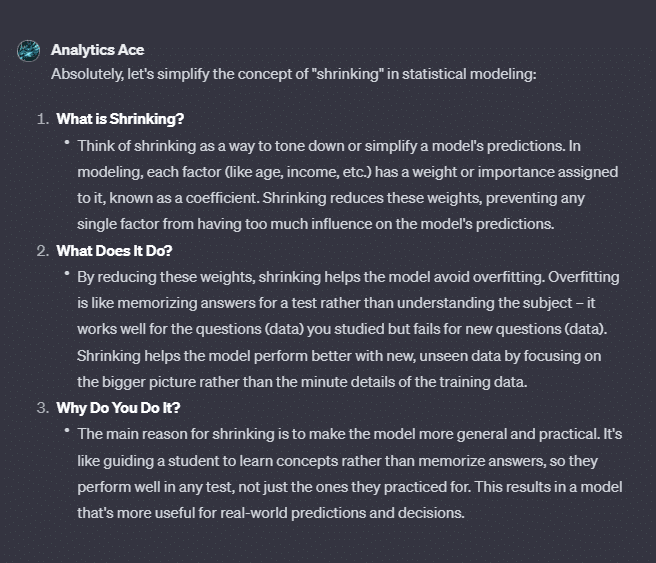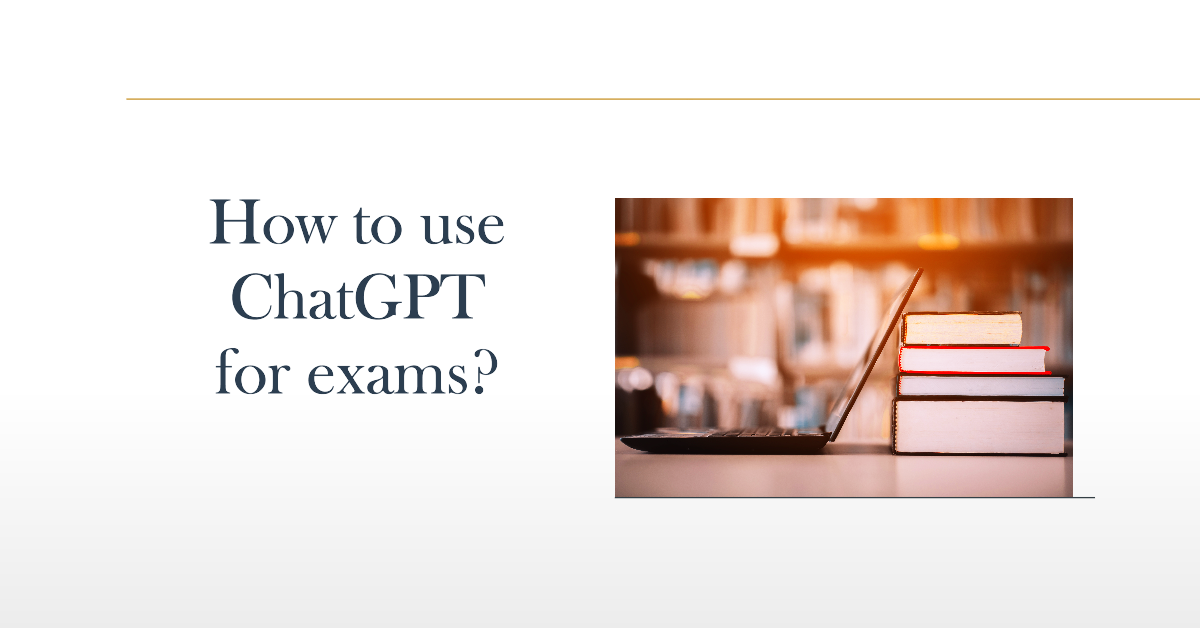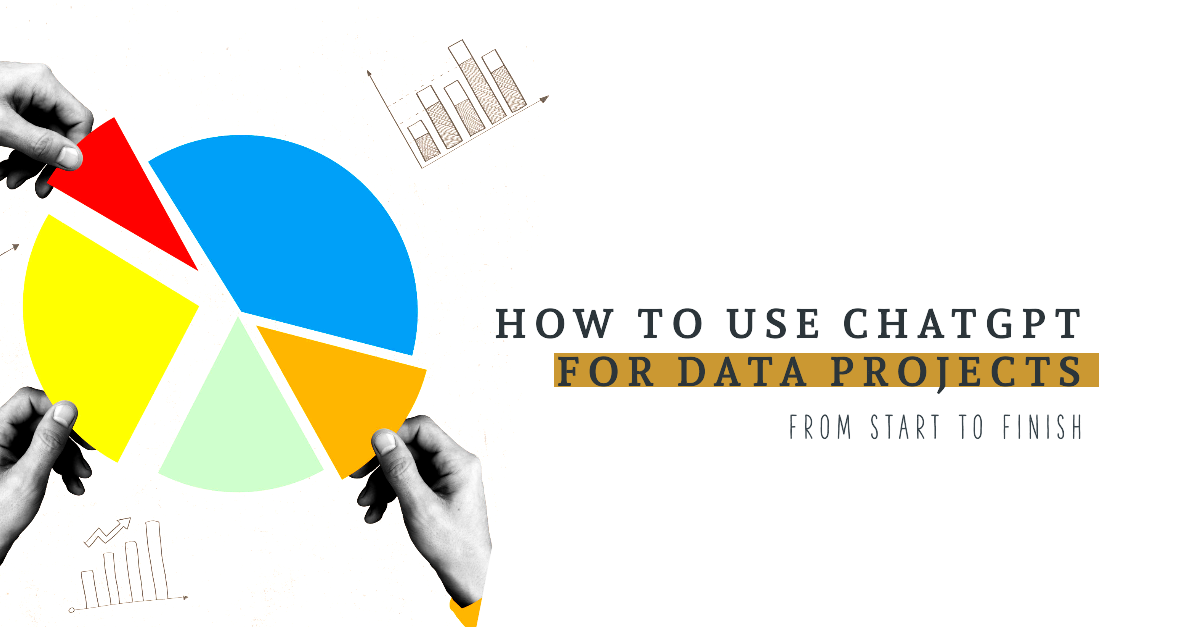Would you like to use ChatGPT to help you prepare for your exams but are unsure how to go about it? Don’t worry in this article, we share 5 different ways how you can use ChatGPT to prepare for your exam.
Flashcards
Our first method is a familiar one to many and is a great way to prepare for your exams: flashcards. Traditionally, flashcards require a lot of effort with paper and writing, but with a simple prompt on ChatGPT, this can be done with the push of a button. Below, you’ll find a template prompt that you can use. Make sure to include information about the subject, the topics you want to be tested on, and the level of difficulty (e.g., bachelor’s or master’s) to create more relevant flashcards.
In our example prompt, you can paste text, a summary, or a paper you need to study. Alternatively, you can use the upload function to upload the document you want flashcards for. Then, copy the prompt and let ChatGPT generate the flashcards for you. Once you receive the flashcards, you can start studying with them and work on committing the material to memory. Good luck!
[Insert text]
Create flashcards for studying based on the text above. Please make as many flashcards as you think are necessary. Use this structure:
Flashcard 1:
Question: …
Answer: …’
Our Try: 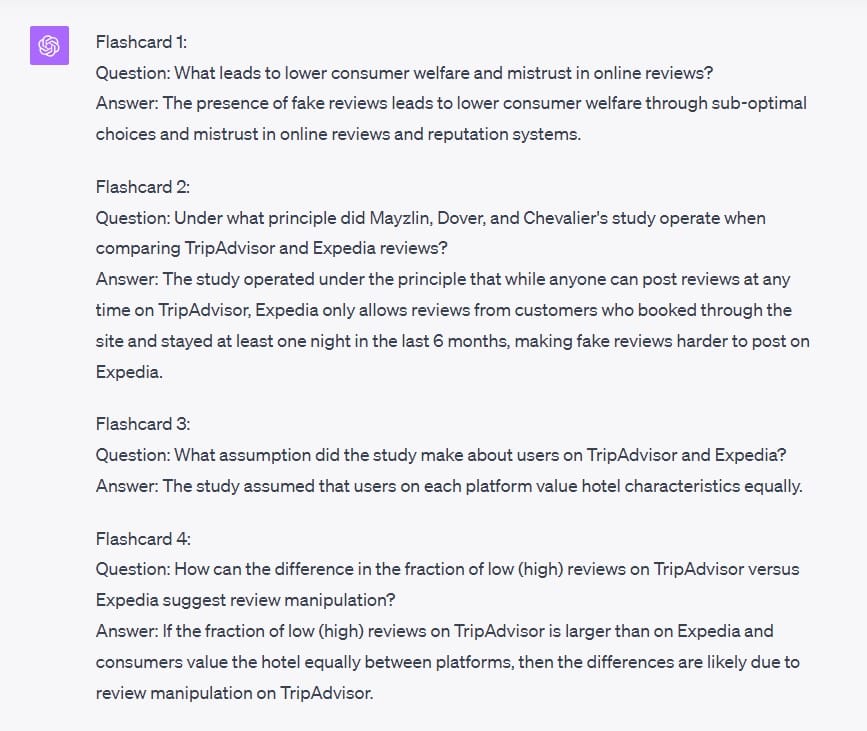
Create Personalized Study Plan
Preparing for your exams isn’t just about studying, it’s also about managing your time effectively. For some, time management comes naturally, while for others it can be more challenging. If you find yourself in the latter group, don’t hesitate to ask ChatGPT for help. A well-organized study plan can significantly reduce stress and improve your mental health during exam weeks. With the right prompt, you can create a well-structured plan tailored to your needs.
When using the template prompt, make sure to answer the questions as thoroughly and in as much detail as possible for the best results!
Prompt
I would like to create a personalized study plan for my upcoming exam. Create a clear table in which you provide my personalized study plan day by day. Please use the information I provide you:
< Answer the questions underneath, and send both the questions and answers to ChatGPT >
1. Number of Chapters: How many chapters does your course have?
2. Exam Date/Deadline: When is your exam or by what data do you need to be prepared? And what day is it now?
3. Study Time: How much time can you dedicate to studying each day or each week?
4. Current Understanding: What is your current level of understanding of the material? Are there any chapters you already know well?
5. Review Days: Do you want to have specific days set aside for revision? If so, how many?
6. Unavailable Days: Are there any specific days on which you cannot study due to other commitments?
Role Playing
A favorite of ours at Tilburg.ai is role-playing. ChatGPT can take on personas, allowing you to have engaging and insightful conversations. Simply instruct ChatGPT to act as a specific person and describe that persona in detail. For example, you could ask it to take on the role of a critical professor or even Socrates by providing clear instructions like, “Act as…”. This method is an excellent way to test your knowledge in a dynamic and interactive way.
This approach is not only beneficial for students but also serves as a creative tool for teachers to incorporate ChatGPT into their classes or assignments. Below, you’ll find an example of how to start a conversation with ChatGPT using this method.
Prompt
You’re going to act as a dissatisfied customer of Google Glass who wants information about the underlying marketing plan and is going to make suggestions for improvement. I am the producer of Google Glass and must defend myself. I’ll first give you information about why Google Glass flopped, which you don’t need to do anything with and don’t need to ask any questions about, but which may be relevant for the role-play. Please start the role-play only after I send ‘start’. Always stay in your role. Do you understand the instructions?
Output 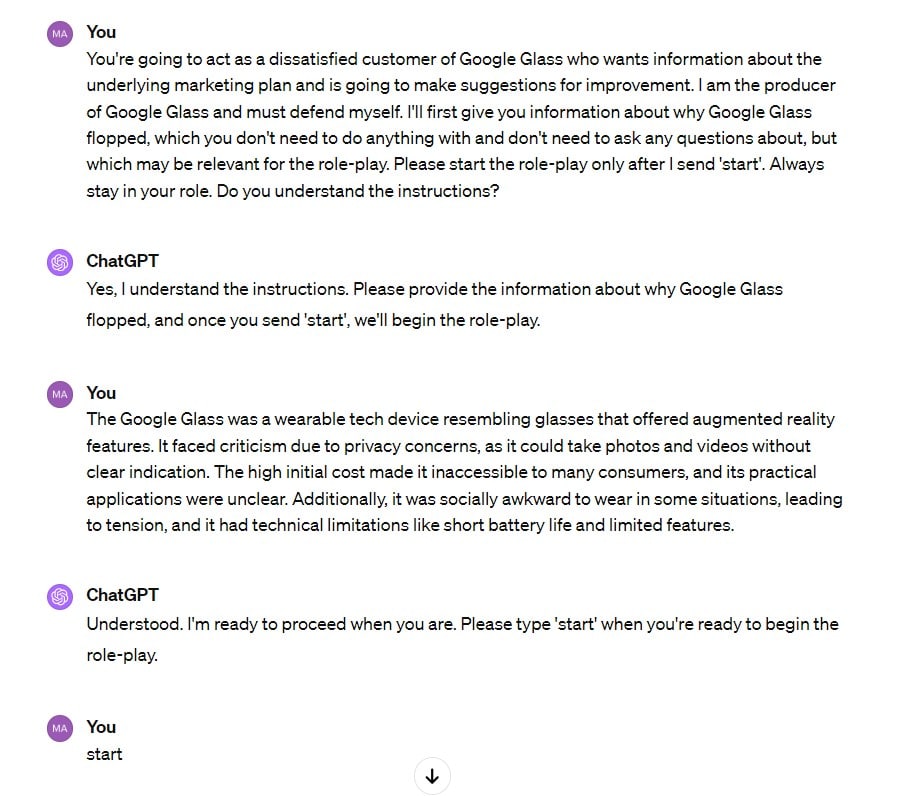
Mnemonic
Mnemonics are short memory aids that help you remember information better by creating associations. More specifically, they are learning techniques that support the memorization or retrieval of information in human memory, often by linking the information to something easier to remember. With ChatGPT, you can easily generate custom mnemonics to enhance your learning. There are different types of mnemonics, and by specifying a certain type you can create more personalized memory aids. Here are some examples:
- Musical mnemonics
Songs and jingles can be used as mnemonics. A common example is how children memorize the alphabet by singing the ABC song. Another example is book tunes that help in remembering complex information. - Name mnemonics (acronyms)
The first letter of each word is combined to form a new word. - Acrostic mnemonics
The first letter of each word is combined to form a sentence or phrase.
Prompt
Create a mnemonic for the upper arm muscles — Biceps Brachii, Brachialis, Triceps Brachii, and Coracobrachialis
Output 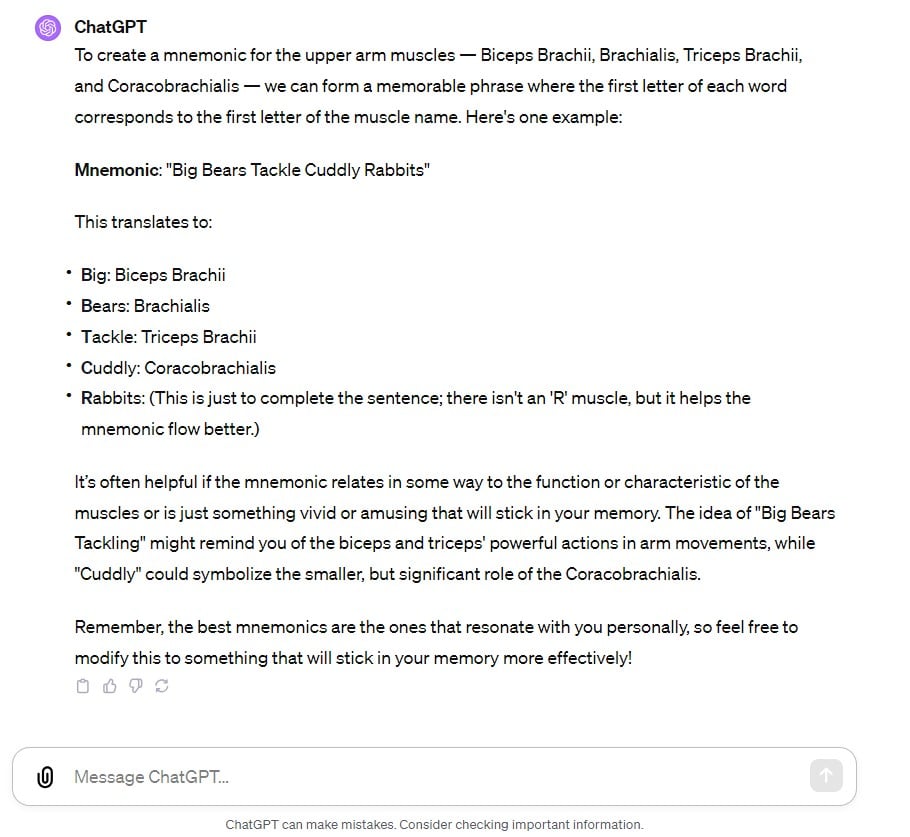
Better Concept Understanding
Our final tip: Your classes are likely packed with terminology, and it’s almost impossible to remember all the details of what everything means. As you might have guessed, you can use ChatGPT to help clarify concepts you didn’t fully understand during class or from your notes. When used effectively, ChatGPT can often explain certain concepts more clearly than your teacher! Plus, there’s no time pressure, take your time and interact at your own pace.
Prompt:
In class we talked about the concept of [INSERT CONCEPT], please explain this concept to me in simple terms. Please note, I am not a proffensional in this area so try to explain it someone that does not know anything about it.
Output